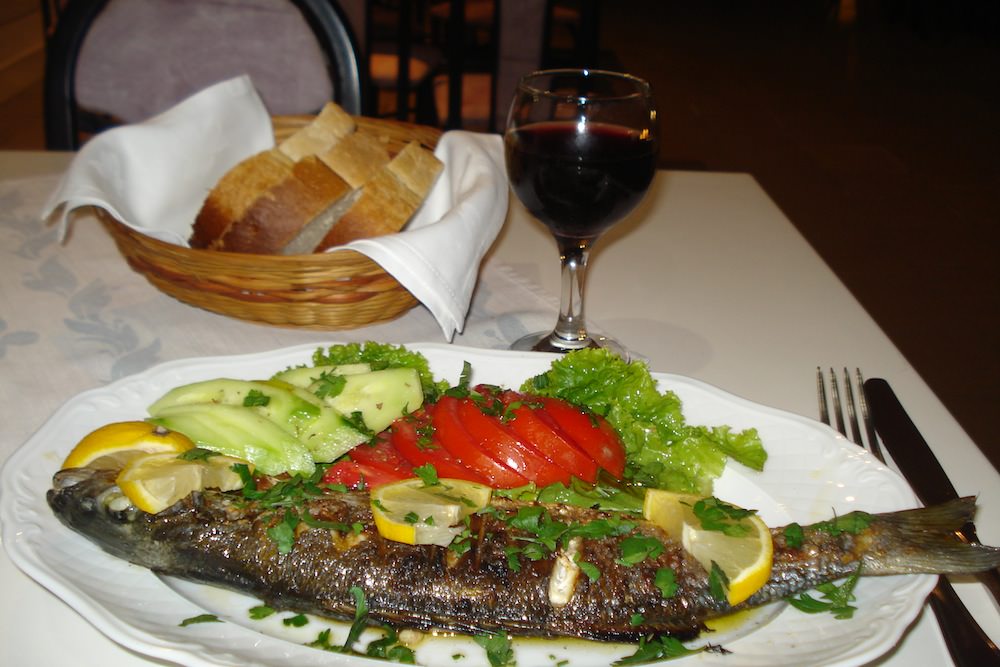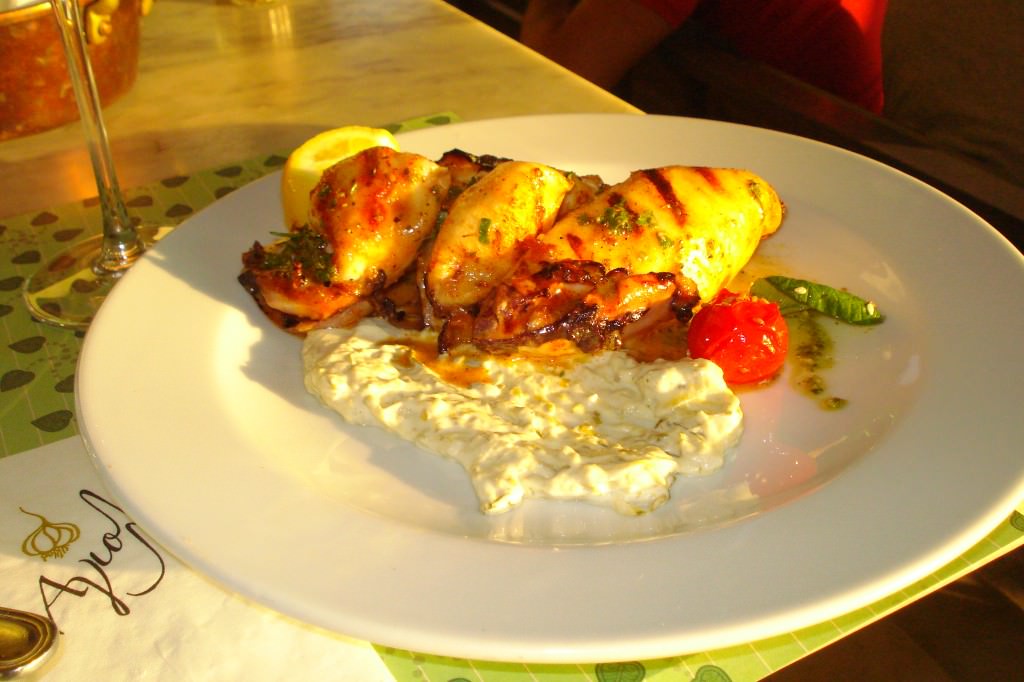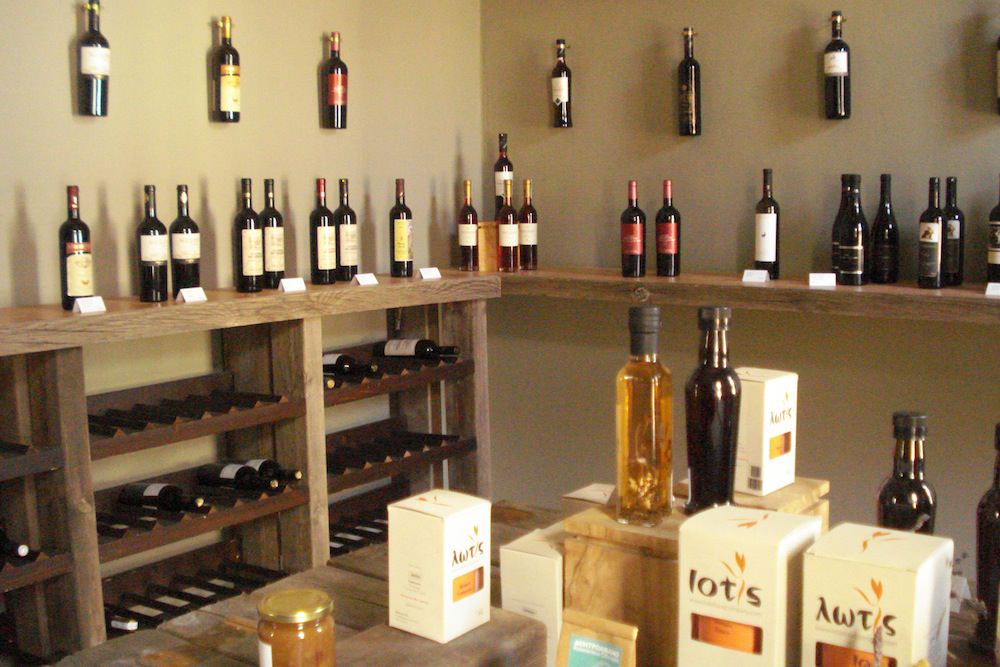Did you know that when you sit down to a hearty meal of Greek food that you are often eating exactly the same dishes their ancestors did in ancient times? The first cookbook was written by a Greek, Archestrolus, in 350 BC suggesting that food was always an important part of Greek life.
Some of these ancient dishes include dolmades (stuffed grape leaves) and many of the same fruits, vegetables and grains grown in Greece today were also used by their ancestors including grapes and olives.
>>Also read: My Greek Table: Authentic Flavors and Modern Home Cooking from My Kitchen to Yours
Greece’s climate is perfect for growing many of the herbs used in their cooking. Many of them grow in the wild such as oregano, basil, mint and thyme. I recall when I lived in a small shepherd’s village on the island of Euboeia, I rode in the back of a pickup truck up into the mountains with the village ladies to collect oregano. I also gathered thyme, sage and mint and then hung bundles of herbs on the rafters of my little stone spitaki.
Herbs are not only used for adding flavor to food but they are also used as medicines. Camomile is soothing for colds and mountain tea is good for digestion. I picked horta, the wild greens that are a favorite part of Greek meals and made dolmades from the vine leaves that grew on my trellis.
Some Greek dishes have been influenced by the East. When the Persians invaded Greece back in the 5th century BC they brought food such as yoghurt, rice and sweets made from honey and sesame seeds. When Alexander the Great invaded Asia a couple of centuries later, he often sent home samples of flora to the philosopher Aristotle. Among these were the lemon-like fruit called citron.
When the Romans invaded in 197 BC they brought with them typical foods of their culture such as pasta and sauces. Arab traders brought spices such as cumin, cinnamon, cloves and allspice. Hummus is the Arab word for “chickpea” And later, when the Ottoman Turks invaded, they introduced coffee, saganaki pots and a variety of sweets like halva, lokoumia, and baklava. Potatoes and tomatoes came from the New World about 500 years ago.
Even the tall white hats traditionally worn by chefs had their origins in Greece. In the Middle Ages, the Orthodox monastic brothers who cooked in the monasteries wore tall white hats to distinguish them from the other monks who wore tall black hats.
Greek food not only tells the story of the country’s past, it is also part of the present, inspiring cuisine from other parts of the world. Greek food (the Mediterranean diet) is said to be the healthiest way of eating. It is known that the people of the island of Icaria live longer than anyone else and it has a lot to do with their healthy life-styles and diet.
On the islands, seafood is a staple. Fish from the Mediterranean is tastier than ocean caught fish because of the crystal clear waters of the Aegean and Ionian Seas. There’s nothing tastier than fresh calamaria (squid) or a plate of fried maridaki, those tiny sardine-like fish you munch down heads and all. Another favorite is shrimp saganaki – read this mouthwatering recipe here.
Lambs and goats in Greece graze free on fields full of herbs which gives their meat a unique flavor. I recall from my time in the village, that it was not wise to get too friendly with any little lamb I saw tied by a fence post as that little lamb was likely going to be on the table that night. There’s nothing more succulent and tasty than a Greek lamb dish.
Lamb is particularly popular at Greek Easter time and the air will be scented with lambs roasting on spits in courtyards or even on the street. One of my favorite dishes is arni kleftiko (bandit’s lamb). This tasty dish was conceived by the Greek rebels (klefts) who were fighting the Turks in the mountains of Greece. They’d steal sheep and wrap up the butchered meat, burying it in a pit so the aroma of roasting flesh wouldn’t be detected. Today’s arni klefitko is wrapped in foil and baked with zucchini, tomato and feta sprinkled generously with oregano.
The secret of Greek cooking is that nearly all the ingredients are fresh. Most vegetables are grown locally. Greek tomatoes are succulent and sweet as is the fruits: grapes, melons and juicy watermelon.
When you drive into the mountains you’ll see hundreds of apiaries. Greek honey is the best and it has been used for centuries, not only as part of the diet, but also for its healing properties. Greek wine is growing more popular with wine-bars opening all around Athens where you can sample from the country’s many vineyards.
Food preparation has its own traditional rules. The main components of any Greek meal will incorporate herbs, grains, vegetables, meat (mainly lamb), chicken, fish, cheese (especially feta ) , olive oil, lemons, eggplant and zucchini. Greek food appeals to all tastes and this country-style cooking has become popular worldwide.
One thing I love about dining in Greece is the spirit of congeniality along with the Greek traditions of sharing dishes. Cooking and eating are very much a part of the Greek culture.
The tradition of mezes (feasting on small dishes) has a casual, companionable spirit. The mezes are a variety of small dishes typically served with wine or ouzo along with hummus and tzatziki for dipping your bread or pita.
There’s nothing more delicious than Greek bread, fresh from the fourno! The Greeks love sharing meals with family and friends. It’s a social affair whether at home or at a taverna. The ancient Greeks held symposiums a word meaning “drinking with company” and this tradition is carried on in todays restaurants and tavernas.
If you want to partake in a traditional Greek dining experience, there are several tours offered in Athens where you can sample the best traditional cuisine as well as learn about its origins and customs.
Or, you can take Greek cooking lessons starting at 5.30 pm in the evening with Athens Walking Tours. There’s also a gastronomical museum in Psyri which exhibits the history of Greek food. And, they offer a memorable dining experience at the museum.
Ancient Greek Food Written by and photos by W. Ruth Kozak for EuropeUpClose.com







December 2014 BCATW Buzz
Monday 1st of December 2014
[…] of Burnaby Writers, and an open mike reading for the Royal City Arts Awards in Richmond. She had a travel article published in Europe Up Close in November about Greek food. A special article was published in the Greek Reporter, a cross-Canada on-line publication about […]
Ron
Tuesday 25th of November 2014
feeling hungry....
Ruth Kozak
Saturday 22nd of November 2014
Thanks for pointing that out. These things just slip through unnoticed especially when the spell check doesn't pick it up.
Harini Kariappa
Friday 21st of November 2014
Hi Ruth, I noticed a typo error in your interesting article on Greek Food......so I thought of bringing it to your notice? Hope you don't mind my presumption...? Quote: "..........When you drive into the mountains you’ll see hundreds of aviaries(shouldn't this be "APIARIES?")........... Greek honey is the best and it has been used for centuries, not only as part of the diet, but also for its healing properties...." End Quote
Terri Fogarty
Saturday 22nd of November 2014
Thank you. This is now fixed.